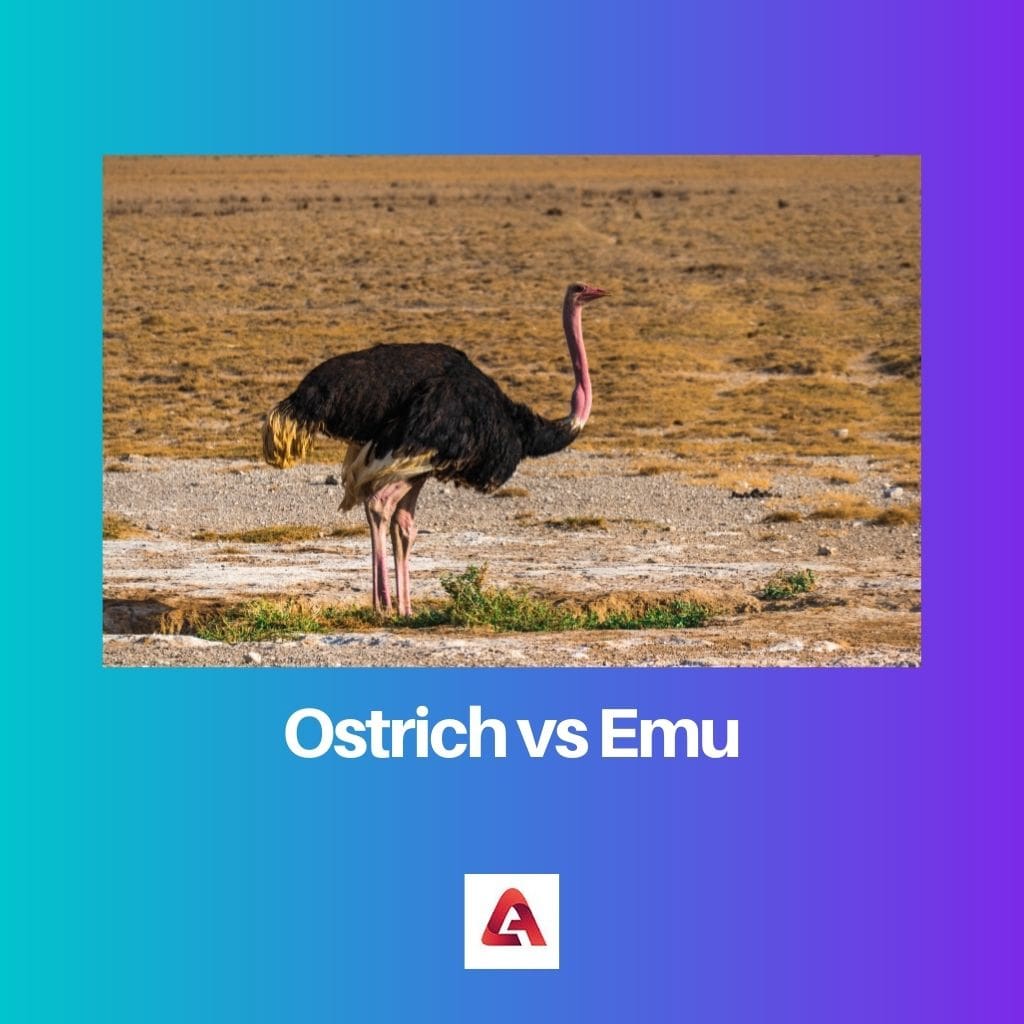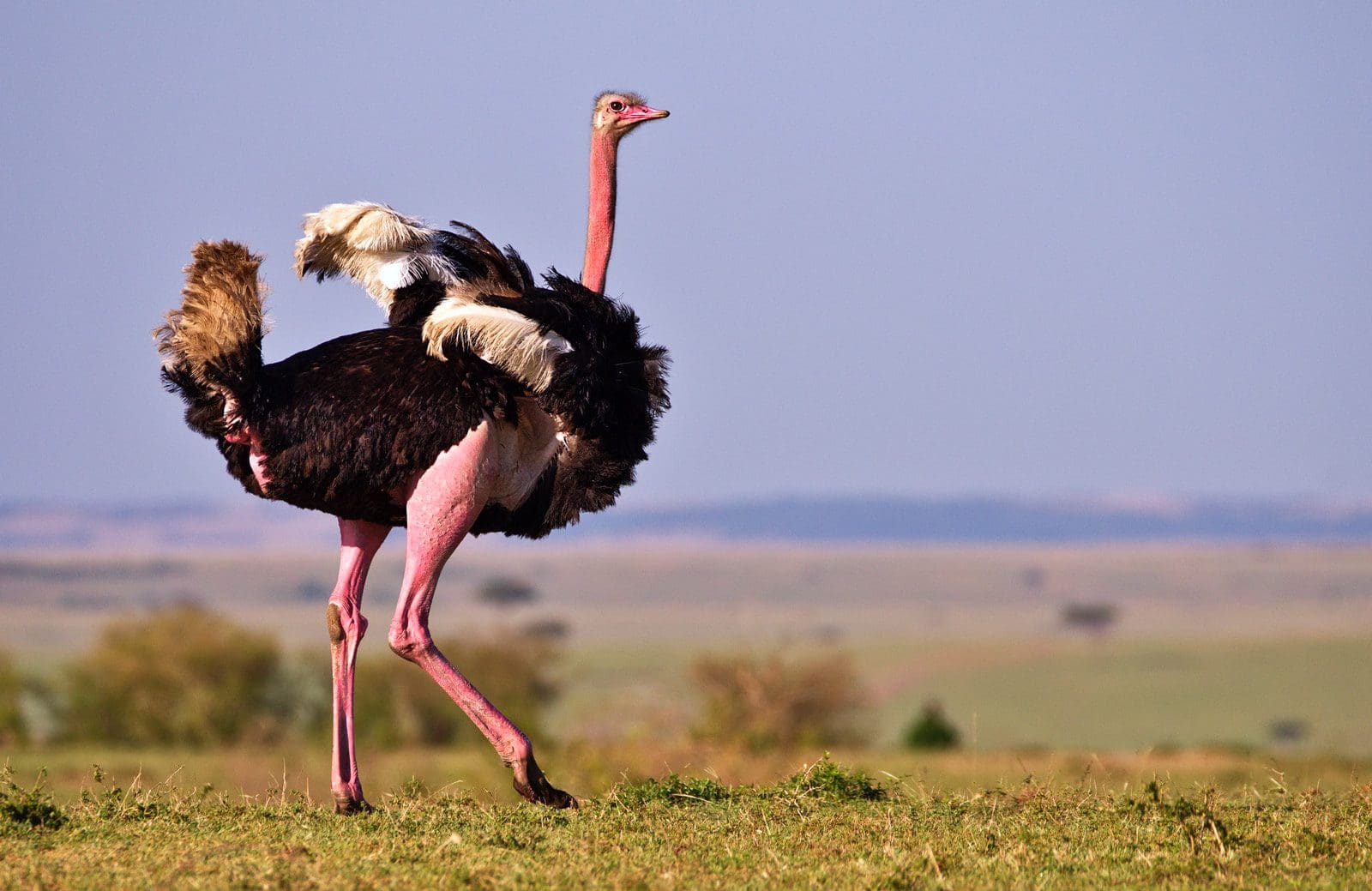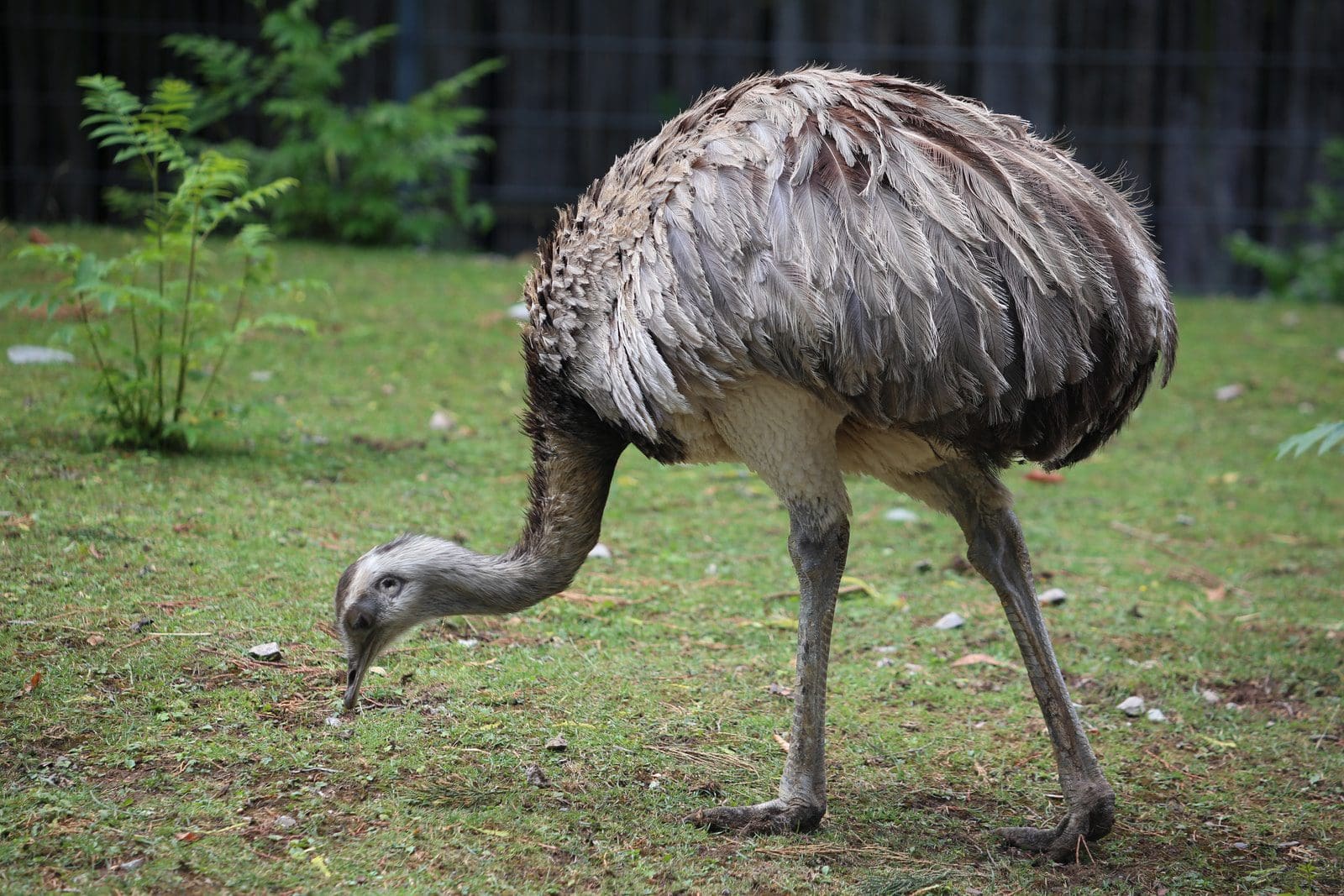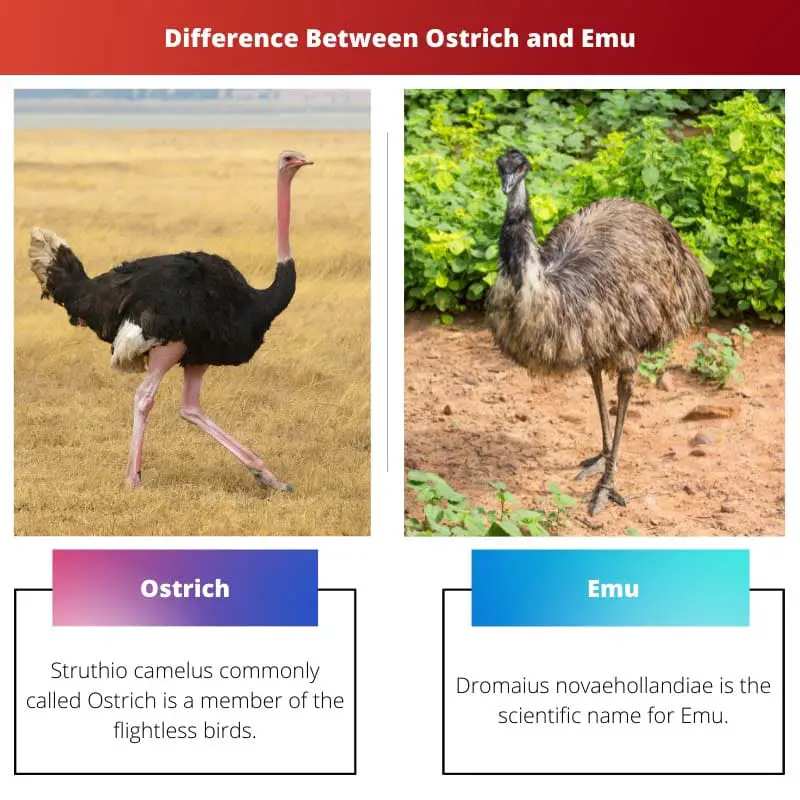Nature is diverse, with almost 8.7 billion species on earth and many undiscovered. Among the categorisation of birds ‘flying birds’ and ‘flightless birds’ where the anatomy remains somewhat similar, morphology plays an important role.
Unlike other birds, flightless birds evolved and adapted differently and can live on land. Ratite is a diverse group of flightless birds, primarily large and long-legged. They have a smooth sternum (breastbone) and lack a keel where the flight muscles are allocated, which helps in wing movement.
Key Takeaways
- Ostriches and emus are large, flightless birds that belong to the ratite family, but they are different species with distinct physical characteristics and native habitats.
- Ostriches are native to Africa and are the largest living bird species, known for their long necks, strong legs, and ability to run at high speeds.
- Emus are native to Australia, slightly smaller than ostriches, and have a more rounded body, shorter neck, and a different feather structure.
Ostrich vs Emu
An Ostrich is a flightless bird that stands over nine feet tall and is mostly found in grasslands, savannahs, semi-arid plains, and some parts of Africa. An emu is a very large bird that’s six feet in height, primarily an herbivore, and it’s mostly found in Australia and the Oceania region.

Ostrich and Emu are both flightless and share a common ancestry. They are by large similar in body structure and are considered the strongest and the fastest among birds.
Comparison Table
| Parameter of comparison | Ostrich | Emu |
|---|---|---|
| Location | Found only in Africa’s semi-arid plains, savannahs, and grasslands. | Native to Australia, leaving Tasmania. |
| Size | The giant bird is up to 9 feet tall and weighs 145 kg. | It can vary from 5.5 to 6 feet and weigh around 36-40 kgs. |
| Speed | 70km/h and is, therefore, the fastest bird. | They can run at the speed of 50km/h. |
| Toes | Two toes. | Emu has 3 toes. |
| Eggs | Six inches in length and weighing around 3 pounds, the colour ranges from pearl white to cream. | 5.1 inches in length and weigh between 450 – 650 g. The colour ranges from striking dark green to black. |
What is Ostrich?
Struthio camelus, commonly called Ostrich, is a member of the flightless birds. They are the largest and can run as fast as 70km/h.
Once found in Asia, Africa, and Arabian Peninsula, they are reduced to hot savannas and the woodlands of Africa due to extensive hunting and extinction. They are omnivores though primarily they prefer plants and feed on roots, seeds, leaves, and flowers but can seem to be eating insects such as locusts, snakes, and lizards.
They also eat pebbles that help them in digestion while grinding the food. There are five different species of Ostrich, and all of them differ on a minute level depending on the colour and the size.
Males have a bold black and white colouring that they use to attract females. They also use the span of their wings, reaching up to 2 meters, in the mating ritual. The females, light brown coloured, show extensive colour change at the time of mating, where the feathers turn silvery.
The lifespan of an ostrich is about 50 – 75 years.

What is Emu?
Dromaius novaehollandiae is the scientific name for Emu. The word Emu comes from Arabic words meaning ‘large bird’ literally!
They are predominantly found in Australia and are in their native Australia, a giant bird and the second largest overall. They have relatively short feathers compared to the body size with a 50km/hr speed.
Like Ostrich, they are omnivores but primarily herbivores and depend on pasture availability. They feed on a wide variety of leaves, grasses, seeds, and native flowers; sometimes, they feed on water plants too. They consume insects like grasshoppers, snails, and caterpillars and swallow pebbles to help grind food.
They mate around summer and autumn, characterised by the transformation of the colour and feathers covering the head and neck. They also make sounds to give a signal of being ready to mate.
During the incubation of the eggs, the female leaves, and the male takes care of the eggs and can stay without food for months, during which he loses enough weight. The sound produced is low and deep, and it is hard to record because of its low frequency. The life expectancy of an Emu is about 10-20 years in the wild, whereas 35 years in captivity.

Main Differences Between Ostrich and Emu
- The main difference between Ostrich and Emu is that the former is technically the largest and the fastest bird, while the latter comes second in the race.
- The difference can be interpreted just by looking at the toes, the ostrich has two toes and a claw, and Emu has three toes.
- Emu requires lots of water, consuming as much as 10 litres daily – Ostriches can stay without water for many days (as long as 2 weeks) and get most of their water from the plants they eat.
- The ostrich’s eggs are white, nearly 6 feet long and weigh 3 pounds, while Emu lays greenish-blue eggs weighing a pound.
- Female Emu leaves the eggs to the male counterpart and might mate with a partner, while in Ostrich’s case, both the male and female incubate them, the female in the daytime and the male at night.


The in-depth comparison between ostriches and emus is elucidating and enriching. It’s great to see such detailed insights provided in a well-structured manner.
The article presents a meticulous and well-researched dissection of the unique attributes and characteristics of ostriches and emus, contributing to a deeper understanding of these avian species.
Absolutely, the content’s depth and precision in dissecting the differences between ostriches and emus underscore the high intellectual caliber of this article.
The detailed comparison and insights into the distinct features of ostriches and emus have certainly broadened my understanding of these fascinating flightless birds.
I find it remarkable how the physical and behavioral differences between ostriches and emus are explained in a clear and comprehensive manner. This article has expanded my knowledge about these flightless birds significantly.
The article presents factual information supported by scientific evidence, enhancing the credibility of the content and making it an enriching read.
Indeed, the article effectively illustrates the unique attributes and characteristics of ostriches and emus, providing a comprehensive understanding of these magnificent birds.
The scientific rigor and detailed analysis presented in this article contribute to a comprehensive understanding of the unique characteristics and ecological distinctions of ostriches and emus.
I appreciate the clarity and depth with which the key differences and similarities between ostriches and emus are delineated in this article. The comparisons are both engaging and educational.
Absolutely, the article’s depth of analysis is commendable. It has immensely contributed to my understanding of the characteristics of these flightless birds.
The detailed comparison table provides a clear and concise overview of the distinguishing features of ostriches and emus, making it easier to grasp the unique aspects of these birds.
The details about the habitat, diet, and reproduction behaviors of ostriches and emus are truly enlightening. It’s captivating to discover the intricate aspects of these magnificent birds.
The article’s thorough examination of the anatomical and habitat differences between ostriches and emus offers valuable insights into the distinctive nature of these flightless birds. It’s an intellectually stimulating read.
I concur with your perspective. The article’s comprehensive analysis significantly enriches the discourse on the distinguishing features of ostriches and emus.
The information presented here about flightless birds, particularly ostriches and emus, is enlightening and intriguing. I find it fascinating to learn about the distinctions between these two species.
I completely agree with your observations. The article has provided an informative and interesting comparison between ostriches and emus.
This article effectively unraveling the distinguishing features between ostriches and emus is both enlightening and thought-provoking. It’s a commendable piece of work.
I couldn’t agree more with your assessment. The article’s ability to provoke thoughtful reflection on the characteristics of ostriches and emus is truly remarkable.